Experiencing the new NVIDIA GeForce GTX 760
There’s been a lot of exciting new GPU announcements from NVIDIA recently including the GeForce GTX 780 GPU and the GeForce GTX 770 GPU. Today NVIDIA adds another GPU to the 700-series lineup: the GeForce GTX 760. The GTX 760 is going to be a logical “sweet spot” for gamers that want a high-powered Kepler graphics card in the sub-$300. price range.
NVIDIA GeForce GTX 760 Reference card (click/tap to enlarge)
Overview
Here’s a quick side-by-side comparison of the specs for the GTX 760, GTX 770, and GTX 780 which are all built on Kepler: (blue values represent differences)
With base-config MSRPs as follows:
- NVIDIA GeForce GTX 760 MSRP: (2GB) $249.00
- NVIDIA GeForce GTX 770 MSRP: (2GB) $399.00
- NVIDIA GeForce GTX 780 MSRP: (3GB) $649.00
With a 256 bit memory interface and blazing fast 6.0 Gbps memory bandwidth the GTX 760 is targeted at high performance even with high resolution displays.
It was pretty exciting when my pre-release evaluation GTX 760 arrived. I wasted no time putting this GPU to work! I installed the GTX 760 into an Intel Core i7 system with 32GB RAM and connected it to two 1920×1200 displays via DVI. Following the hardware install I installed the latest pre-release drivers (basically the same as those released by NVIDIA today).
NVIDIA GeForce GTX 760 Reference card – back side (click/tap to enlarge)
In order to put the GTX 760 through some trials I decided to perform a familiar test (running a DirectX 11 game) and also to try something new tools/scenarios as well.
One of the tools I used for this article is called GPU-Z from Tech Power Up. If you are the kind of person that likes to see lots of information about your hardware, GPU-Z will be something to check out.
Here’s the Graphics Card properties view that I captured during my testing of the GTX 760:
GPU-Z Graphics Card Properties for the NVIDIA GTX 760 graphics card
DirectX 11 Gaming
As a quick test I fired up BF3 on my test system to see how the GTX 760 would perform with Windows 8 and a DirectX 11 game.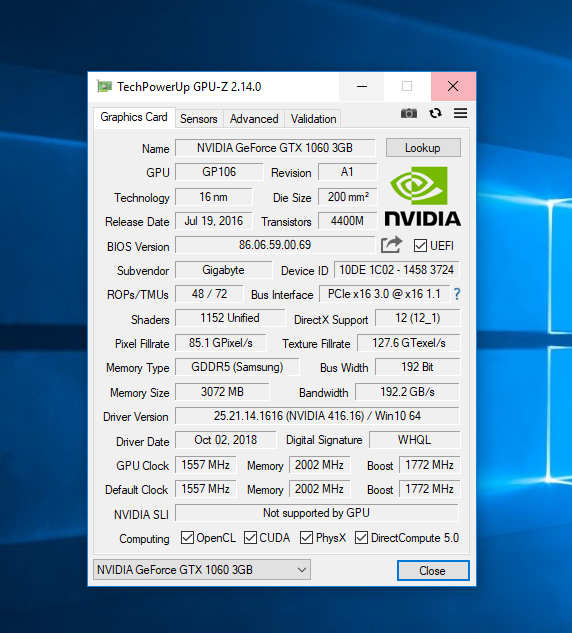 I ran this test on a single display at 1920×1200 resolution. I decided to run two tests: one with the GeForce Experience app recommended graphics settings, and one with graphics settings on “Ultra”.
I ran this test on a single display at 1920×1200 resolution. I decided to run two tests: one with the GeForce Experience app recommended graphics settings, and one with graphics settings on “Ultra”.
When I ran the GeForce Experience app I saw the following:
GeForce Experience settings for BF3 on my GTX 760 test system (click/tap to enlarge)
I clicked “Optimize” and then started up BF3.
BF3 running at recommended graphics settigns – 91 FPS (click/tap to enlarge)
Playing BF3 with these settings was awesome. The gameplay experience was buttery smooth, and BF3 never skipped a beat at these settings. But I had to find out what things would look like and feel like if I maxed everything out, so I applied “Ultra” settings. What I found was that FPS numbers were still in the 60-75 range! Amazing for a graphics card starting at $249.!
One of the things that I’ve become obsessed with lately is system monitoring, specifically GPU utilization and other graphics related metrics.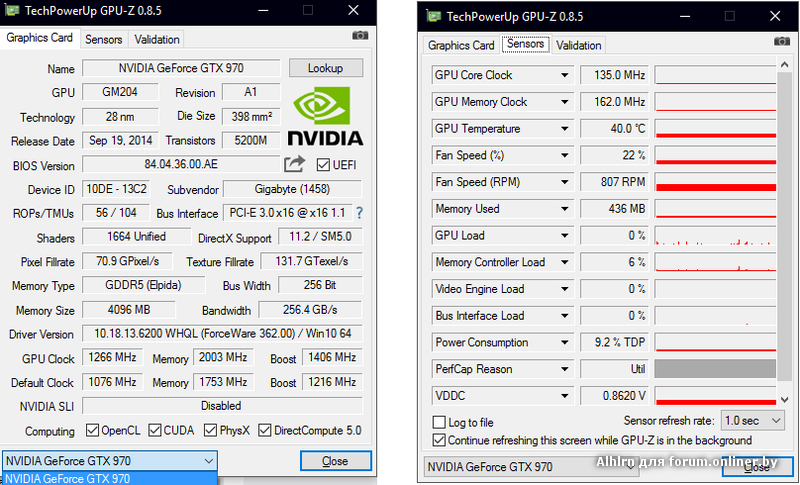 I found that GPU-Z has great GPU monitoring capabilities including live graphs of key metrics. The following is a graph view that shows BF3 gameplay:
I found that GPU-Z has great GPU monitoring capabilities including live graphs of key metrics. The following is a graph view that shows BF3 gameplay:
GPU-Z display while playing BF3
Notice the dips in GPU Load, Memory Controller Load, Power Consumption, and voltage while my game session was reset. It’s awesome to be able to monitor graphics performance like this! You can see here that BF3 is taking “full advantage” of the GTX 760 capabilities.
Folding @ Home
While most people think of GPU-accelerated computing in the context of graphics-intensive games, there are many other scenarios and applications that use GPU hardware acceleration on Windows 8. Some of these scenarios include the Windows 8 Start Screen and related UI elements, Windows Store Apps UI, video editing and animation apps, CAD/CAM programs, and even research projects.
For a long time I’ve been wanting to try “Folding @ Home” (FAH). Folding @ Home is a distributed computing medical research project that is run by Stanford University.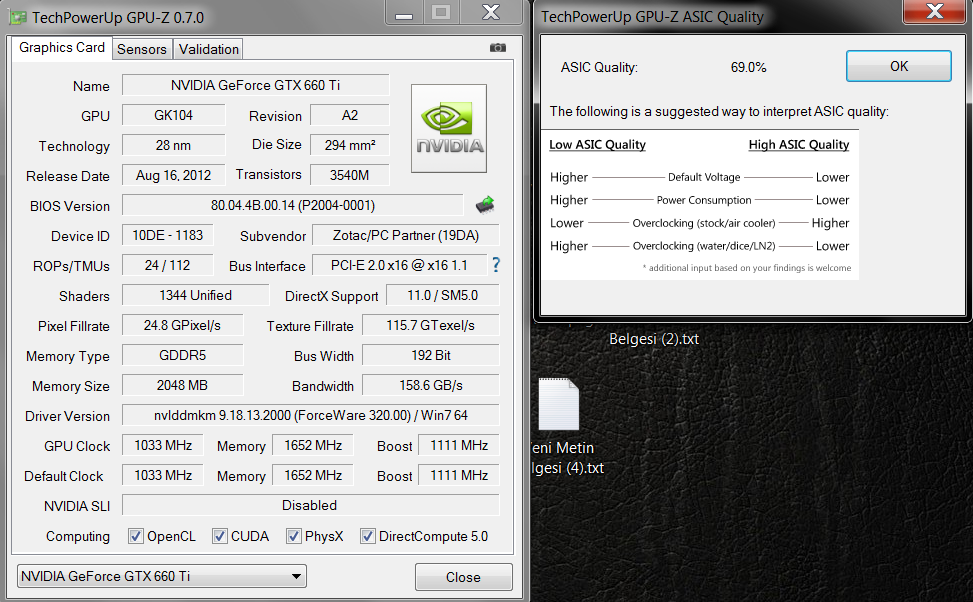 FAH allows protein folding simulations to be pushed to a multitude of client computers around the world. By volunteering to use spare CPU and GPU compute cycles, valuable research modeling takes place in the background on your PC. These simulations help researchers understand and cure diseases like Alzheimer’s, Huntington’s, Parkinson’s, and many cancers.
FAH allows protein folding simulations to be pushed to a multitude of client computers around the world. By volunteering to use spare CPU and GPU compute cycles, valuable research modeling takes place in the background on your PC. These simulations help researchers understand and cure diseases like Alzheimer’s, Huntington’s, Parkinson’s, and many cancers.
Could FAH take advantage of the 1152 cores on my GTX 760? I was about to find out. I downloaded and installed FAH, and then configured my settings via the web interface. In no time I had FAH running both on my CPU and GPU as you can see here:
FAH running on my gaming PC with the NVIDIA GeForce GTX 760 (click/tap to enlarge)
Continuing in my obsession with system monitoring, I fired up GPU-Z to make sure that FAH was tapping out the vast GPU compute capabilities of the GTX 760. Here you can see GPU metrics when stopping and re-starting FAH. Note how GPU Load ramps back up when FAH is resumed:
GPU-Z GPU monitor graphs while stopping and re-starting Folding @ Home
I’m really liking Folding @ Home. It’s great to be able to so easily contribute to valuable research, and it is fun to monitor the progress of compute jobs via the web interface. I’m looking forward to running FAH on more of my computers and perhaps with multi-GPU hardware… I feel another obsession coming on.
It’s great to be able to so easily contribute to valuable research, and it is fun to monitor the progress of compute jobs via the web interface. I’m looking forward to running FAH on more of my computers and perhaps with multi-GPU hardware… I feel another obsession coming on.
Summary
My experiences with the NVIDIA GeForce GTX 760 were quite positive. The driver and hardware install was painless, and this graphics card ran without even the slightest issue. Whether for gaming or for work, the GeForce GTX 760 is a very capable GPU at a great price.
Find me on twitter here: @GavinGear
NVIDIA GeForce GTX 760 Has 1152 CUDA Cores
An alleged Geforce GTX 760 screenshot GPU-z has been posted on Chiphell forums.
GeForce GTX 760 in a nutshell:
- 1152 CUDA cores
- 7 GHz memory clock
The leak is quite interesting for two reasons. As it turns out, the card would use 1152 CUDA Cores rather than 1344 as reported in other posts. This only proves that’s always worth to wait before taking the final statement. Apparently the new GK104-225 GPU is a cut-down version known from GeForce GTX 660 OEM, and not the one known from GeForce GTX 670 or GTX 660 Ti. However due to different width of the memory bus, we can’t say it’s the same.
This only proves that’s always worth to wait before taking the final statement. Apparently the new GK104-225 GPU is a cut-down version known from GeForce GTX 660 OEM, and not the one known from GeForce GTX 670 or GTX 660 Ti. However due to different width of the memory bus, we can’t say it’s the same.
The latest mid-range model also has less texture units — 96 — than both previously mentioned cards. The ROPs count did not change and remains at 32. We don’t know if the clocks are from reference model, but we are quite sure that the memory clock has the same speed as GTX 770, exactly 7010 MHz effective frequency. Speaking of the memory, you can clearly see that the card is equipped with 2GB GDDR5 memory across 256-bit interface, so it’s not 192-bit as some of you tried to convince others. Anyway, the GPU clock runs at 1072 MHz for base and 1111 MHz for boost, which would be one of the highest clocks for the reference cards in the history, but we don’t know if this is the non-reference model yet.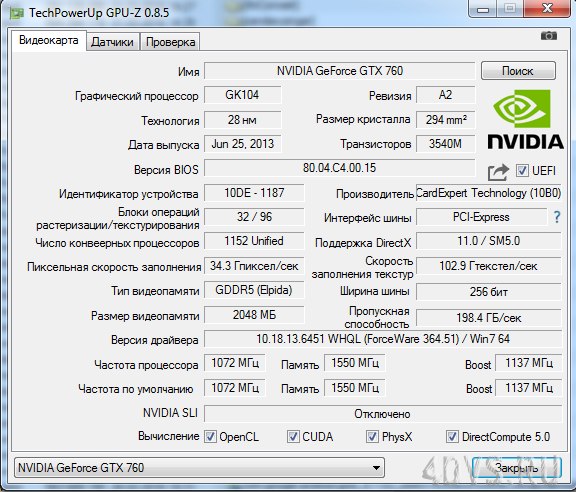 What we do think however, is that the card would feature GPU Boost 2.0.
What we do think however, is that the card would feature GPU Boost 2.0.
According to the leaker, NVIDIA did in fact want to use the GTX 760 Ti naming, but they dropped the Ti idea later, so the card ended up with the pure GTX 760 sexiness.
The GeForce GTX 760 is supposedly arriving on June 25th, with a slight possibility that NVIDIA may launch it sooner. We don’t know the actual pricing yet, but first leaks from the stores suggest €299/$299 price tag.
| VideoCardz.com | GeForce GTX 660 OEM | GeForce GTX 760 | GeForce GTX 670 |
|---|---|---|---|
| GPU | GK104 | GK104-225 | GK104-325 |
| CUDA Cores | 1152 | 1152 | 1344 |
| TMUs | 96 | 96 | 112 |
| ROPs | 32 | 32 | 32 |
| Base Clock | 823 MHz | 1072 MHz | 915 MHz |
| Boost Clock | 888 MHz | 1111 MHz | 980 MHz |
| Memory Clock | 1452 MHz | 1752 MHz | 1502 MHz |
| Effective Memory Clock | 5808 MHz | 7008 MHz | 6008 MHz |
| Memory Bandwidth | 134 GB/s | 224 GB/s | 192 GB/s |
| Memory Size | 1.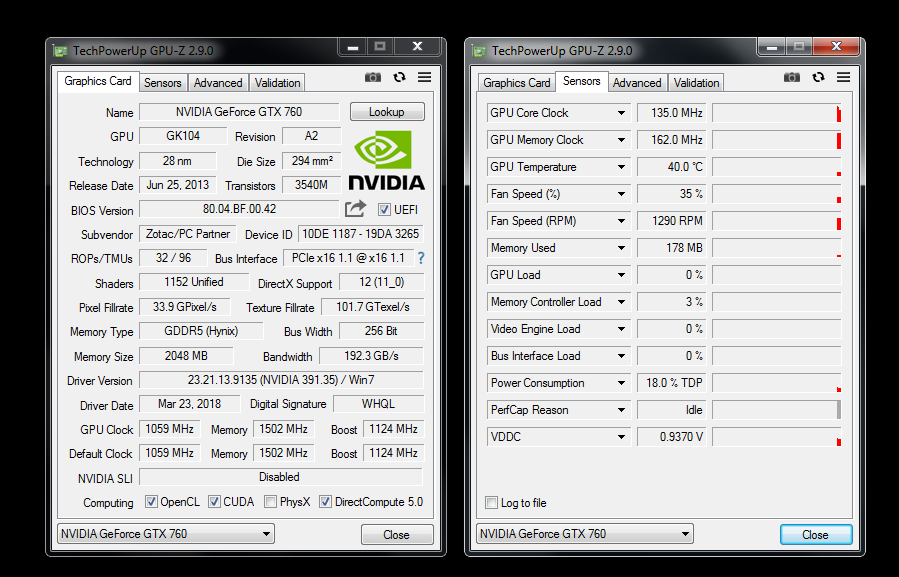 5GB/3GB GDDR5 5GB/3GB GDDR5 |
2GB GDDR5 | 2GB GDDR5 |
| Memory Bus | 192-bit | 256-bit | 256-bit |
| Power Connectors | 1x 6-pin | 2x 6-pin | 2x 6pin |
Source: Chiphell
Thanks to mic08n64 for the tip!
News about GPU-Z, Intel and NVIDIA — NVIDIA WORLD
TechPowerUp website has prepared another update of its popular GPU-Z utility designed to get all available information about your video card and monitor its parameters. The update was numbered 2.42.0.
On the eve of the release of a new series of central processors, the release of a fresh version of the utility seems to be quite reasonable. As you might expect, it adds support for Intel Alder Lake-S CPU integrated graphics, as well as several new graphics cards from both NVIDIA and AMD.
GPU-Z 2.42.0
Changes in GPU-Z 2.42.0 are listed below:
- Added support for Intel Alder Lake and Tiger Lake Server.
- Added display for NVIDIA cards with reduced hashrate in the GPU name field, for example, «GA102 (LHR)».
- Added support for RTX 3060 variant based on GA104.
- Added support for detecting Resizable BAR technology in Radeon RX 5000 series cards.
- Added «-log» command line option that sets the name of the sensor log file and starts logging after the utility is run.
- Improved read stability for EVGA iCX sensors.
- The Radeon HD 5000 Series will now display the ATI logo.
- Fixed an issue where DirectX 12 support was not displayed on AMD Navi 2x cards.
- Fixed a crash when taking a screenshot.
- Fixed crash in render test.
- Fixed a crash on some systems when reporting on Resizable BAR.
- Fixed memory clock reading on some AMD APUs.
- Added Intel Tiger Lake release date.

- Added support for NVIDIA RTX 3050 Ti Mobile (GA106), T1200 Mobile, GRID K340, GRID M30, Q12U-1.
- Added support for AMD Radeon Pro W6800X, Barco MXRT-8700.
- You can download the free GPU-Z utility from our website.
Tiger LakeGPU video cardsAMDIntelNVIDIAGPU-Zutilities
comment on related news
TechPowerUp
The new version of the utility has improved monitoring capabilities for video cards from Intel and AMD, fixed errors in the operation and startup of the utility, and added a huge number of new models of video cards from both NVIDIA and AMD.
GPU-Z
The full list of changes in GPU-Z v2.31.0 is as follows:
- Fixed DirectML detection on new builds of Windows Insider.
- Added GPU voltage monitoring for Intel integrated graphics.
- The AMD Radeon Pro driver now reports version number information.
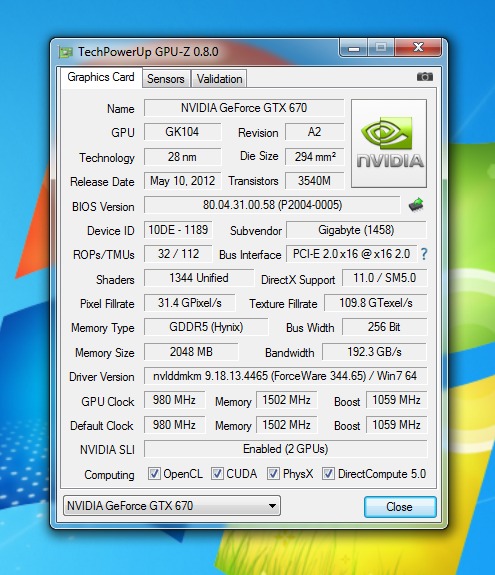
- Added command line arguments: -install and -installSilent.
- Replaced installer with InnoSetup.
- Improved driver version detection on some systems with NVIDIA GPUs.
- On the «Advanced» tab, if Vulkan or OpenCL cannot be detected, the message «not supported» is displayed instead of «not found».
- On slow machines, GPU-Z startup has long delays to avoid errors.
- Added support for NVIDIA GeForce RTX 2070 Super Mobile, RTX 2080 Super Mobile, RTX 2060 Max-Q, RTX 2070 Super Max-Q, RTX 2080 Super Max-Q, RTX 2070 Mobile Refresh, RTX 2060 Mobile Refresh, G TX1650 Mobile, GTX 1650 Ti Mobile, GeForce MX350, GRID RTX T10 (GeForce Now), Quadro RTX 8000, Tesla P40, Quadro 500M, GeForce GTX 1060 (Microsoft), GeForce GT 610 (GF108), GeForce GT 730M.
- Added support for AMD Radeon Pro 580, Radeon Pro V340, Apple 5300M and 5500M.
You can download GPU-Z v2.31.0 on our website.
graphics cardsAMDIntelNVIDIARadeongraphic processorsGPU-Zutilities
its popular utility GPU-Z, designed to obtain all available information about your video card and monitor its parameters. The update was numbered 2.25.0.
The update was numbered 2.25.0.
The new version boasts the placement of information about supported graphics technologies, improved stability, improved and expanded hardware databases.
GPU-Z
The full list of changes in GPU-Z 2.25.0 is below:
- The first tab now shows the status of Vulkan, DirectX Raytracing, OpenGL and DirectML support.
- Fixed blue screen in QEMU/KVM virtual machines caused by MSR access.
- Improved frequency display for AMD Navi.
- The Advanced tab now displays base, game and boost frequencies in Navi.
- Added an exception for stuck fan frequencies when fan stop is activated on AMD graphics cards.
- Added exception for 65535 rpm fan speed displayed in Navi.
- The message Finished is displayed when the BIOS has finished uploading to the site.
- Added support for NVIDIA Quadro P2200, Quadro RTX 4000 Mobile, Quadro T1000 Mobile.
- Added support for AMD Radeon Pro WX 3200, Barco MXRT 7600, 780E Graphics, HD 8330E.

- Added support for Intel Ice Lake.
You can download the GPU-Z 2.25.0 utility from our website.
testingIce LakeDirectXOpenGLray tracingVideoBIOSVulkanNaviAMDIntelNVIDIAQuadroRadeonGPU-Zutilities
comment related news
TechPowerUp
The TechPowerUp website has updated its popular information and diagnostic utility.
This time only 5 changes have been made. The main one is support for the integrated graphics processor in the 9th generation Intel Core CPUs. Bugs from previous versions have also been fixed.
GPU-Z v.2.14.0
The full list of changes in GPU-Z 2.14.0 is as follows:
- Boost frequencies are used to calculate scene fill rates and textures when possible.
- Fixed lost Intel GPU temperature sensor.
- Fixed incorrect frequency on some Intel IGPs («12750 MHz»).
- The energy sensor is now marked with «W» and «%».

- Added support for Intel Coffee Lake Refresh.
You can download the GPU-Z utility from our website.
Coffee Lake RefreshIGPIntelNVIDIAGPUsGPU-Zutilities
and GPU-Z was updated to version 2.6.0. This version received support for new GPUs and critical bug fixes.
In particular, support for new variants of video accelerators from all three leading manufacturers has been added. In terms of errors, a crash at startup, a crash when working on systems with Radeon RX Vega video cards and on systems with an empty «board id» for the video card were excluded.
See the full list of changes below:
- Updating sensors no longer freezes the GPU-Z window.
- Fixed an issue where GPU-Z could not start due to a broken UPX EXE compressor.
- Fixed crash on RX Vega.
- Fixed fan speed monitoring on RX Vega.
- Added support for Radeon Adrenalin Edition.
- Changed GPU name on RX560 from Baffin to Polaris 21 at AMD’s request.
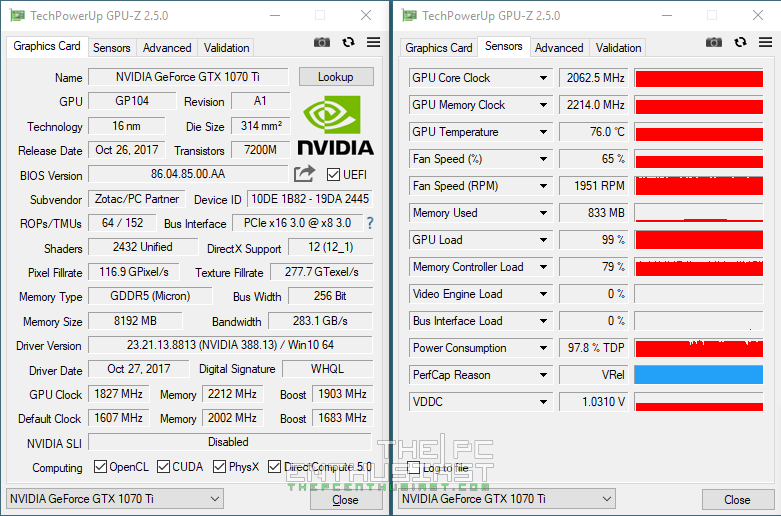
- Added support for NVIDIA Titan V, GeForce GTX 1060 5 GB, Tesla K40m, GeForce 825M, Quadro M520, NVIDIA NVS 810, NVIDIA Grid M6-8Q.
- Added support for AMD Vega 8 Raven Ridge Graphics, Pro WX 9100.
- Added support for Intel HD Graphics P630, UHD Graphics 630, Gemini Lake UHD Graphics 600.
- Fixed kernel size in GP100.
- Fixed number of unified processors in Braswell.
- Fixed a crash on AMD cards with an empty platform ID (MSI RX 580 Armor).
You can download the free GPU-Z utility from our website.
monitoringTeslavideo cardsAMDIntelNVIDIAQuadroRadeon RX 500GPUsGPU-Zutilities
comment on similar news0003
The popular diagnostic and information utility GPU-Z received its next update to version 2.5.0.
The new version of the program contains information about newly released video cards, and some errors have been fixed.
Full changelog for GPU-Z 2.5.0 includes:
- Added driver release dates and WHQL status as line items.

- Update button added.
- The BIOS version is now always written in capital letters.
- Changed the name ForceWare to NVIDIA in the driver version.
- Changed NVIDIA NVFlash to save BIOS.
- Added support for NVIDIA GTX 1070 Ti, GTX 1050 Ti Mobile (GP106), NVIDIA Quadro GP100, Quadro M620.
- Added support for Intel UHD Graphics 620.
- Added support for AMD RX Vega 64 Liquid, FirePro M4150.
- Added monitoring of Vega SOC Clock, VR SOC and VR Mem.
- Added support for WDDM 2.3.
- Fixed a GPU-Z crash when trying to display an error message on BIOS boot failure.
You can download the free GPU-Z utility from our website.
FireProVideoBIOSvideo cardsRX Vega 64IntelNVIDIAQuadroRadeonGeForce GTX 1070 Ti1050 Ti MobileGPU-Zutilities
2016
The TechPowerUp website has prepared another update to its popular GPU-Z utility, designed to get all the available information about your video card and monitoring its parameters.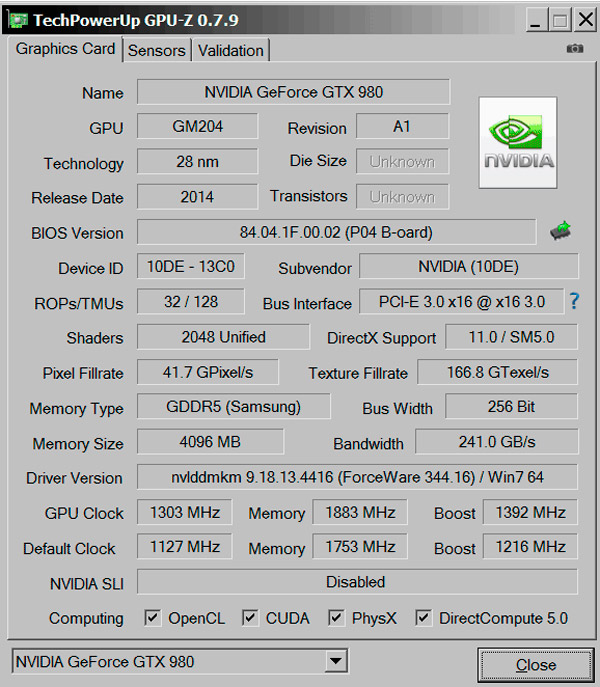 The update was numbered 0.8.7.
The update was numbered 0.8.7.
Version 0.8.7 of the utility is mainly characterized by various fixes of early errors, including incorrect detection of devices, elimination of freezes, detection of support for various technologies and their versions. Also, the video card database has expanded with a number of NVIDIA, AMD and Intel graphics accelerators.
See the full list of changes below:
- The Radeon Software Crimson Edition driver version is now correctly detected.
- Fixed 1.55 V GPU voltage reading on AMD Fiji processors.
- Fixed DirectX capability level 12_1 correct on iGPU Skylake.
- Fixed blue screen on Intel Cloverview (Atom Z2760).
- Fixed CUDA detection for devices with a bus number greater than 9.
- Fixed AMD Beema naming.
- Improved explanation of OpenCL error detection on AMD GPUs.
- Some HD 2000 and HD 3000 cards are now correctly identified as ATI.
- Version ID is now always displayed as two digits.

- Shader model display on old maps has been fixed.
- Fixed millisecond precision in log file timestamps.
- Updated American English translation.
- Other stability fixes.
- Added support for NVIDIA GTX 980M 8GB, GTX 965M, GTX 750 (GM206), GT 710 (GK208), Quadro K1200, M5000, M2000M, M1000M, K2200M, GRID K160Q, Tesla K80.
- Added support for AMD R9 380X, R7 350, Mullins.
- Added support for Intel Skylake Graphics 510, P530, 540.
You can download the free GPU-Z utility from our website.
testingBeemaCUDADirectX 12programsGeForceSkylakevideo cardsAMDIntelNVIDIAQuadroRadeonGPUsGPU-Zutilities
015
TechPowerUp website has prepared another update of its popular GPU-Z utility designed to get all available information about your video card and monitor its parameters. The update received the number 0.8.6.
The most important innovation in version 0.8.6 is DirectX 12 support with the ability to assess the level of video card capabilities when working with Direct3D in the new API version.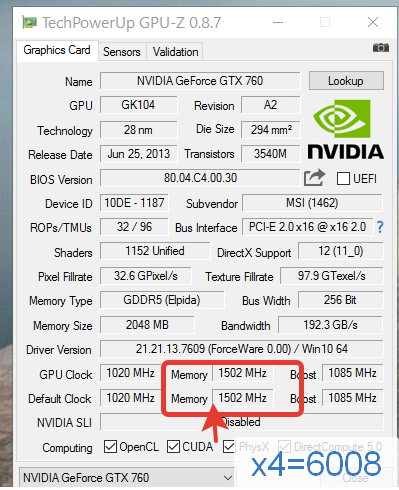 When working with the command line, the “/help” argument was added, and the utility database was replenished with a number of GPUs. Also, work with the BIOS, sensor control and stability have been improved.
When working with the command line, the “/help” argument was added, and the utility database was replenished with a number of GPUs. Also, work with the BIOS, sensor control and stability have been improved.
See the full list of changes below:
- DirectX 12 support added.
- Distributed read model removed.
- Enable AMD GPU sleep on laptops when GPU-Z starts.
- Fixed BIOS reading on AMD Fury processors.
- Fixed incorrect read speed on AMD Fury.
- Fixed support for Intel Skylake / Braswell / Cherry Lake.
- Fixed instabilities on Intel GPUs.
- Fixed rare BSODs on AMD Fury.
- Fixed 3D frequency counter on AMD cards that worked incorrectly without a driver.
- Fixed errors in reading data from sensors on AMD GPUs in deep sleep mode.
- Fixed rare bugs in invalid BIOS access on multi-GPU systems.
- Fixed a bug that resulted in the appearance of random characters when reading the BIOS when it could not be read.
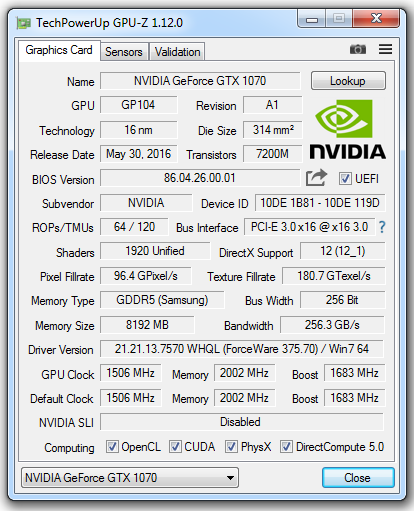
- Fixed voltage monitoring in some Sapphire cards.
- Intel GPU memory usage merged into a single value.
- Shortened brand name to «Biostar».
- Improved memory detection on AMD Radeon.
- Reduced memory consumption when viewing history.
- Removed the NVIDIA logo if the GPU manufacturer is not supported.
- Added «/help» option to the command line.
- Added support for NVIDIA GeForce GTX 950, 920M, 845M, GT 710 (GK208), Microsoft Surface Book GPU, Quadro K610M, Quadro M5000M, M4000, M3000M.
- Added support for AMD R9 Nano, Carrizo, Kabini.
- Added support for Intel Iris Pro P6300, HD Graphics 5600, HD Graphics 520.
You can download this free utility from our website or from the website of the program developer.
testingIrisprogramsGeForceBIOSvideo cardsAMDIntelNVIDIARadeonGPUsGPU-Zutilities
4 A popular utility has been updated to version 0.7.6, designed to obtain all available information about your video card and monitor its parameters.
The new version of the utility has a new revolutionary technology that allows you to determine the manufacturer of video memory on your graphics card.
Full changelog includes:
- Added detection of graphics memory manufacturer.
- The built-in utility for reading the BIOS of the NVFlash video card has been updated.
- Improved voltage monitoring in GTX 780 Ti.
- Added support for the new version of Intel Iris 5200.
- Added support for AMD Radeon R7 M265, R5 M230, Kaveri A10-7850K, A10-770K, AMD FireStream 9350, HD 8530M, HD 8650D.
- Added support for NVIDIA GTX Titan Black, GTX 750 (GM107), GTX 750 Ti (GM107), GeForce 840M (GM108), GTX 760 (192-bit), GT 750M (Apple), GT 735M, GT 720M.
You can download this free utility from our website or from the website of the program developer.
testingIris programsGeForceNVFLASHBIOSMaxwellvideo cardsAMDIntelNVIDIARadeonGPU-Zutilities
comment 0004 A popular utility has been updated to version 0.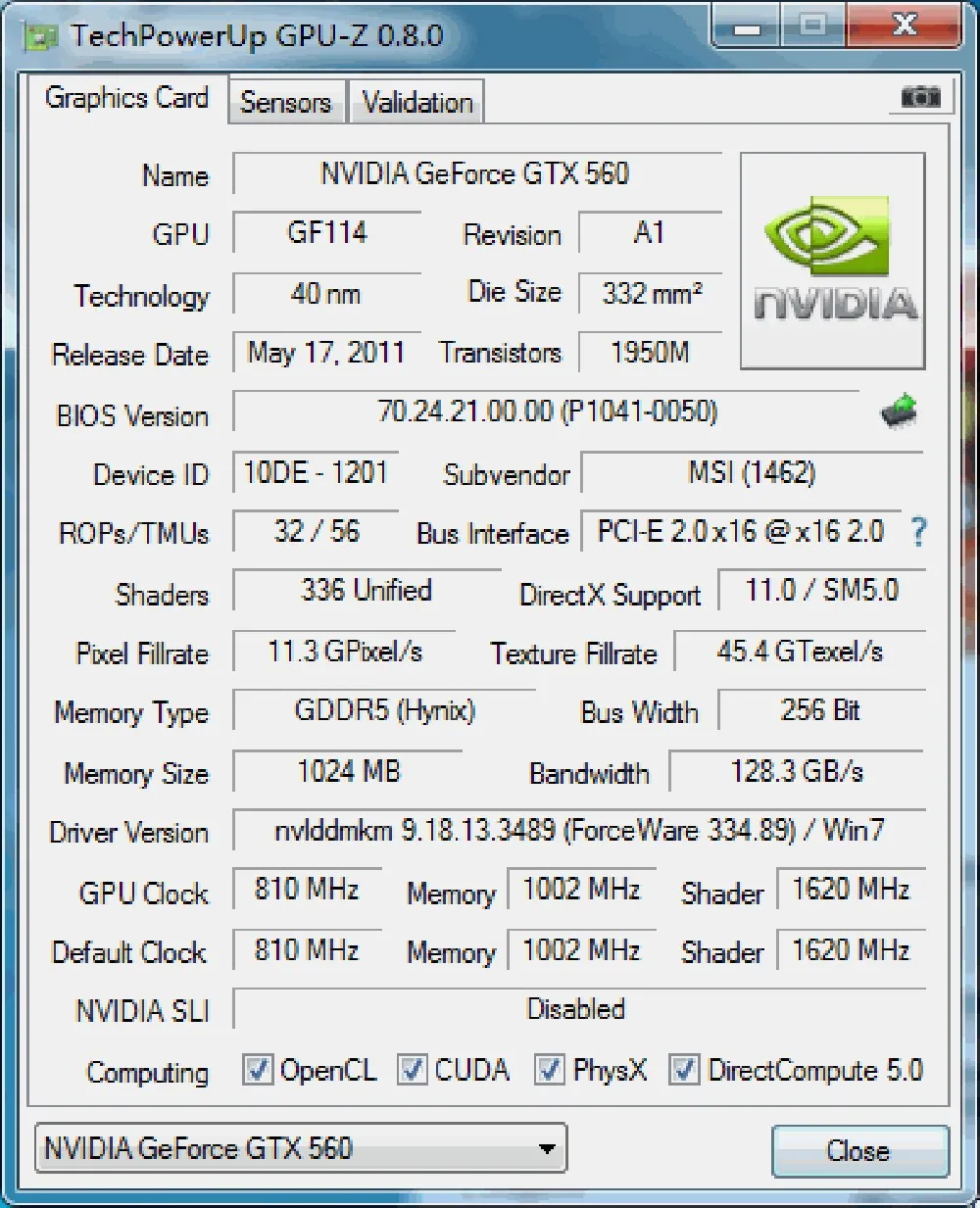 7.5, designed to get all available information about your video card and monitor its parameters.
7.5, designed to get all available information about your video card and monitor its parameters.
The new version of the utility adds support for newly released graphics cards, including AMD Radeon R7 260, HD 7600A, HD 8850M, HD 8400, HD 8240, HD 7620G and NVIDIA GeForce 705A, GTX 645, GTX 650 OEM, Grid K260Q, Quadro K5100M, K6000, as well as the Intel HD 4200 graphics core.
See the full list of changes below:
- Fixed crashes/freezes on NVIDIA Optimus.
- Fixed crash when detecting CUDA.
- Added support for voltage monitoring in new Bonaire/Pitcairn modules.
- Fixed BIOS reading on AMD Mars and Oland.
- Added support for AMD Radeon R7 260, HD 7600A, HD 8850M, HD 8400, HD 8240, HD 7620G.
- Added support for NVIDIA GeForce 705A, GTX 645, GTX 650 OEM, Grid K260Q, Quadro K5100M, K6000.
- Added support for Intel GMA (Bay Trail), HD 4200.
- Windows 8.1 will now be detected correctly.
- Sensor data in shared memory will now be updated once per second.
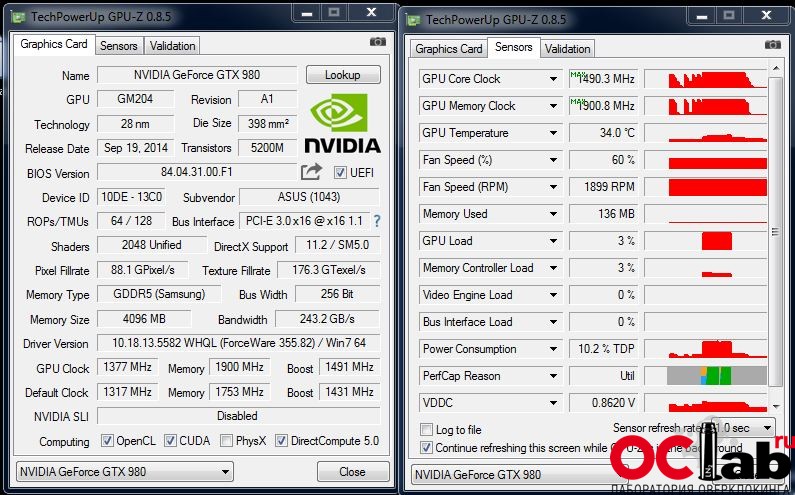
You can download this free utility from our website or from the website of the software developer
testing softwareGeForcevideo cardsAMDIntelNVIDIARadeonGPU-Zutilities
A popular utility designed to get all available information about your video card and monitor its parameters has been updated.
New version clarifies data on recently released video accelerators and includes information on upcoming video cards, including Radeon R9 290X, AMD’s Radeon R9 290 and Radeon R9 270, and NVIDIA’s GeForce GTX 780 Ti. In addition, other accelerators from both companies have been added, including models such as the Radeon HD 8280, HD 7310, GeForce GT 635 and Quadro K3100M.
Full changelog is below:
- Added support for AMD R9 290X, R9 290, R9 270, HD 7310, HD 8280.
- Added support for NVIDIA GTX 780 Ti, GT 635, Quadro K3100M.
- Added release date for AMD R7 260X, R7 250, R7 240.
- Fixed release date for AMD R9 280X.

- Fixed die size for AMD Tahiti.
- Fixed number of ROPs in Ivy Bridge and Haswell.
- Fixed BIOS save on AMD cards not working without a driver.
- Fixed some rare crashes on systems with Intel VGA.
- The render test can be paused by clicking the left mouse button in the test window.
You can download this free utility from our website or from the website of the program developer.
testing programsGeForce Ivy Bridge graphics cards Haswell AMDIntel NVIDIARadeonGPU-Zutilities
comment on similar news
TechPowerUp
The latest release adds support for new GPUs such as NVIDIA GeForce GTX 760 and Radeon HD 8970M, improved support for Intel HD 4xxx graphics and Haswell CPUs.
See the changelog below:
- Added support for NVIDIA GTX 760, Tesla K10, GT740M (GK208).
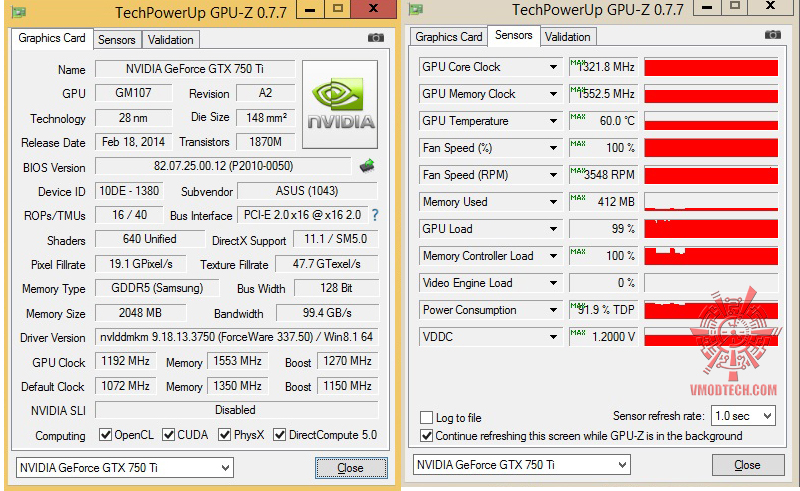
- Added support for AMD HD 8490, HD 8970M, HD 7400D.
- Improved support for Intel Haswell graphics.
- Added information about the core size, transistors and release date of Haswell.
- Added logo for AMD graphics cards.
- Added Greek and Portuguese (Brazilian) translations.
- Updated French translation.
- Fixed rare program crashes when defining DirectCompute.
You can download this free utility from our website or from the website of the program developer.
testingsoftwareGeForceIntel HDvideo cardsHaswellAMDIntelNVIDIARadeonGPU-Zutilities
comment on related news
TechPowerUp
149-222-001 GeForce 700-Series NVIDIA GeForce GTX 7 60 | Junk
-
Description
-
Technical condition
-
Equipment
Buy as a legal entity
Delivery methods
after placing an order
Pick up from warehouse at
_Sheremetyevo-1
,
Lobnya MO, st.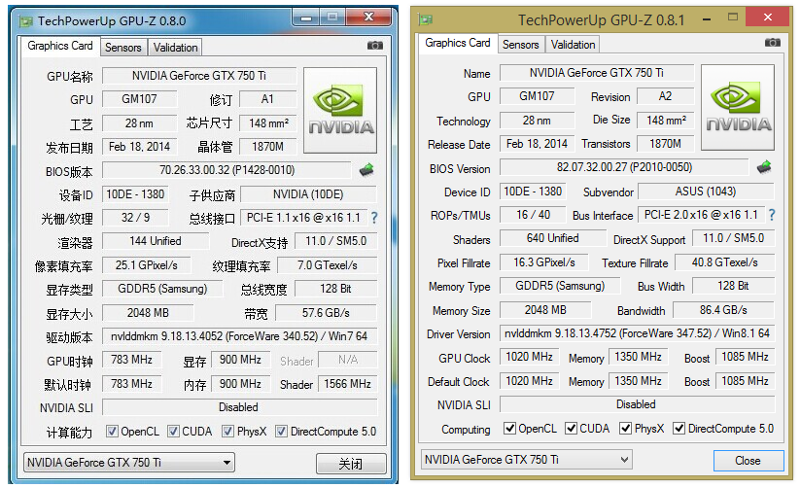 Sports, 1A
Sports, 1A
Pick up from a mobile pickup point in Moscow
schedule
Ask seller a question
PCIe 3.0 / GDDR5 / 2-4GB / 192 bit / 170W / 6-pin + 8-pin
More
-
Description
-
Technical condition
-
Equipment
Used video card ASUS GeForce® GTX 760 2GB / GTX760-DCMOC-2GD5
The video card was removed from the system unit used in the organization’s office for 5 years.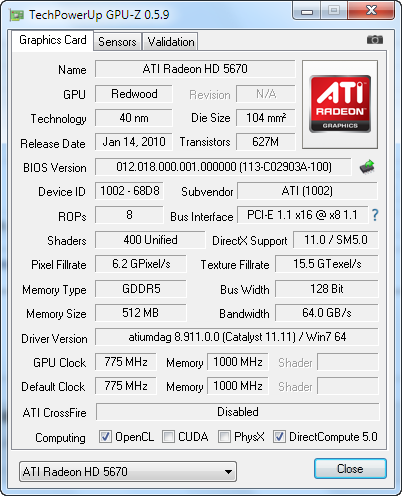
>>>Cooling system:
1×FAN 90mm
1×HeadSink (Aluminum Heatsinks)
>>>Video Card:ASUS GeForce® GTX 760 2GB GTX760-DC2OC-2GD5
1×FAN — OK
2×DVI — not tested
1×HDMI — OK
1×Display Port — not tested
Driver installation — OK
Auxiliary power supply 8-Pin — OK
OCCT 3D 1920×1080 — OK
>>>FurMark Benchmark test data:
Max. temp. — 89°C !
Resolution : 1920×1080
Configuration : Max FHD with 8x anti-aliasing
Min. FPS — 38
Max FPS — 43
Average FPS — 38
(see photo)
Technical condition
Power on test:
Tested. Works. Ready for use.
Equipment
- Composition
-
1
×
GeForce 700 Series
GTX 760 2GB
ASUS
GTX760-DCMOC-2GD5 / 1136 MHz / 256 bit / PCI Express 3. 0 16x / 1xFan / GDDR5 / 1xDP / 1xHDMI / DVI-D / DVI-I
0 16x / 1xFan / GDDR5 / 1xDP / 1xHDMI / DVI-D / DVI-I
Power on test:
Tested. Works. Ready for use.
- Composition
-
1
×
GeForce 700 Series
GTX 760 2GB
ASUS
GTX760-DCMOC-2GD5 / 1136 MHz / 256 bit / PCI Express 3.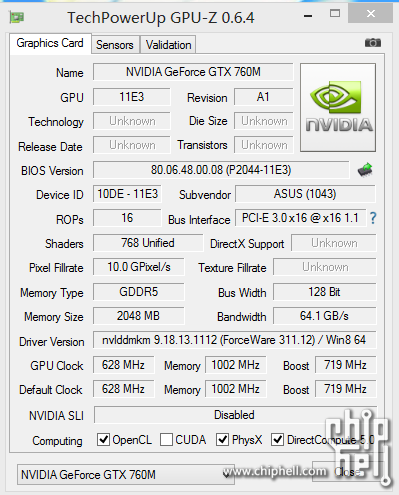 0 16x / 1xFan / GDDR5 / 1xDP / 1xHDMI / DVI-D / DVI-I
0 16x / 1xFan / GDDR5 / 1xDP / 1xHDMI / DVI-D / DVI-I
Description
Video card used ASUS GeForce® GTX 760 2GB / GTX760-DCMOC-2GD5
The video card was removed from the system unit used in the organization’s office for 5 years.
>>>Cooling system:
1×FAN 90mm
1×HeadSink (Aluminum Heatsinks)
>>>Video Card:ASUS GeForce® GTX 760 2GB GTX760-DC2OC-2GD5
1×FAN — OK
2×DVI — not tested
1×HDMI — OK
1×Display Port — not tested
Driver installation — OK
Auxiliary power supply 8-Pin — OK
OCCT3D 1920×1080 — OK
>>>FurMark Benchmark test data:
Max. temp. — 89°C !
Resolution : 1920×1080
Configuration : Max FHD with 8x anti-aliasing
Min. FPS — 38
Max FPS — 43
Average FPS — 38
(see photo)
Technical condition
Power on test:
Checked.
